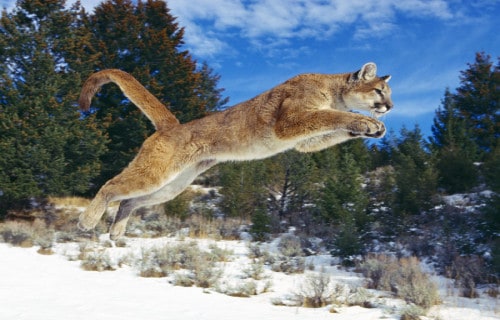
Herein, we present to you, our faithful readers, our collection of articles dealing with Native North American Mammals. At latest count, 6,815 known species of mammals exist throughout the world. These wonders inhabit virtually every corner of the globe, both on land and in the water.
Of these, the most current scientific estimates place the number existing in North America at 462. What we present to you here represents only a small fraction of that number, of course. We hope it is enough to whet your appetite for more, to greater appreciate the wonder of Nature.
Grizzly Bear
Grizzly Bear Facts
- Leading off this article about Native North American Mammals is one that remains somewhat symbolic of the region, the Grizzly Bear.
- To begin with, this powerful and majestic ursine actually represents a subspecies of brown bear. At one time there were a total of five separate recognized species of Grizzly Bear, and each had their distinct range.
- There were once two other subspecies in North America alone, yet sadly, the California Grizzly became extinct in 1924. In addition, experts now believe that the Mexican Grizzly has also become extinct.
- Individual bears living closer to the coast tend to be larger than those living inland, due to the richer diet, which often leads people to believe that these bears represent separate species.
- Perhaps incidentally, these magnificent animals possess one of the longest natural lifespans of any ursine. Males live an average of 22 years in the wild, while the longer-lived females often reach 26 years of age.
Grizzly Bear Physical Description
One of the most noteworthy facts about the Grizzly Bear remains its tendency to display significant sexual dimorphism. Males attain an average weight of 790 lb (360 kg), while females rarely exceed 400 lb (180 kg).
An average individual has a body length of 6.5 ft (198 cm), and a shoulder height of 3.35 ft (102 cm). Yet exceptional individuals can attain weights of as much as 1,500 lb (680 kg).
While coloring ranges from light tan to nearly black, a typical individual will display dark brown fur. The species also remains distinguished by the presence of a pronounced hump on the shoulders.
Next, it bears mentioning that the powerful claws may be as much as 4 in (10 cm) in length.
- Kingdom: Animalia
- Phylum: Chordata
- Class: Mammalia
- Order: Carnivora
- Family: Ursidae
- Genus: Ursus
- Species: U. arctos
Grizzly Bear Distribution, Habitat, and Ecology
While the brown bear possesses a broad range, the subspecies of Grizzly Bear remains solely restricted to North America. Within that range, it exists from Alaska to Mexico, and as far east as Hudson Bay, as well as Canada.
Yet its numbers continue to decline, due to hunting and habitat loss, despite protection. While technically omnivorous, it primarily has a carnivorous diet consisting of large quantities of small game, fish, and various plants, depending on the individual habitat.
Habitats vary, depending on territory, yet typically consists of plains or forests. The animal also spends an average of 5-7 months each year in hibernation, with young actually being born during this period.
The bears typically live solitary lives, except while raising the young.
Volcano Rabbit
Volcano Rabbit Facts
- Next among this accounting of Native North American Mammals is the quite surprising creature known as the Volcano Rabbit.
- The eye-catching term serves as the name for a small species of rabbit endemic to an extremely restricted, and rather unique, range.
- Furthermore, it also currently ranks as the second smallest known type of rabbit.
- Unfortunately, however, the overall population appears to be fragmented into only 16 known small groupings.
- Researchers estimate that no more than 1,200 individuals remain extant. This animal represents one of the rarest known varieties of small mammals.
- Finally, the IUCN understandably lists this remarkable animal as Endangered.
Volcano Rabbit Physical Description
Proving that size remains no hindrance to impressiveness, the adult Volcano Rabbit only averages roughly 0.86-1.3 lb (390-600 grams).
In addition, most individuals only reach a length of about 9 in (22.8 cm). However, a few do reach a length of as much as 12 in (30 cm).
This adorable small animal also possesses small, rounded ears, short legs, and short, thick fur.
The fur itself generally shows a yellowish gray in color, mixed with a slight dusting of short black hairs.
- Kingdom: Animalia
- Phylum: Chordata
- Class: Mammalia
- Order: Lagomorpha
- Family: Leporidae
- Genus: Romerolagus
- Species: R. diazi
Volcano Rabbit Distribution, Habitat, and Ecology
The rather surprising Volcano Rabbit has a range limited to only the mountains of Mexico, in North America.
In fact, its very name derives from the fact that it occurs only on the upper heights of four volcanoes south of Mexico City.
These small groupings appear at elevations ranging from 9,514-12,008 ft (2,900-3,660 m).
The Volcano Rabbit also distinguishes itself from most species of rabbits in its method of defense. Most rabbits thump their feet on the ground to warn others of danger. However, the Volcano Rabbit has a different approach.
It also emits a high pitched squeal. This makes it the only known type of rabbit to vocalize voluntarily.
Individuals primarily remain active during periods of dusk and dawn.
The diet of the Volcano Rabbit consists principally of tall grasses. These also provide them with cover from predators. During times of poor conditions, it will also consume foliage and flowers.
Florida Panther
Florida Panther Facts
- Our fourth species on this list of Native North American Mammals is one that even many residents do not known about, the Florida Panther.
- This magnificent rare feline, quite unfortunately, ranks as a severely threatened subspecies of cougar.
- It evolved as native to a highly restricted area of habitation that human activities have (as with so many other creatures) reduced even further. It now occupies less than 5% of its original range.
- The IUCN had previously listed this magnificent animal as Critically Endangered. As of 1970, there were only 20 living individuals remaining.
- Fortunately (and deservedly so) the Florida Panther was made a protected animal at that time. Due to conservation efforts, its numbers have increased somewhat.
- It has helped somewhat that part of its territory lies within protected areas, such as the Everglades National Park.
Currently, there are roughly 160 of these beautiful felines in the wild. Its status has now been downgraded to Endangered.
Florida Panther Physical Description
The Florida Panther is a unique and beautiful wild feline. Sexual dimorphism is markedly present, with males most commonly being larger than females.
Males usually average 159 lb (72 kg) in weight, while females only reach about 100 lb (45.5 kg) in total. The males grow both longer and heavier in body shape.
Among adults, the fur is primarily a deep tan in color. The underbelly is generally a creamy white in color. There are also distinctive black markings on the tips of the tail and ears.
The eyes are blue at birth, but change to yellow in adulthood, while infants are actually spotted at birth.
Rather interestingly, this species is actually incapable of roaring. Instead, they utilize a combination of growls, chirps, hisses, and whistling noises.
- Kingdom: Animalia
- Phylum: Chordata
- Class: Mammalia
- Order: Carnivora
- Family: Felidae
- Genus: Puma
- Species: P. concolor
- Subspecies: P. c. couguar
Florida Panther Distribution, Habitat, and Ecology
The Florida Panther lives exclusively in the southeast portion of the state of Florida, in the United States . Within that range, it typically inhabits swamps, forests, and pinelands.
Each individual migrates through its territory during the day. Individuals prefer to spend their days in the wetlands, then move to grassland in the evening. This species is primarily nocturnal in nature.
It evolved as entirely carnivorous in nature (no surprise there). Its prey typically consists of a variety of small animals. However, it will occasionally attack larger animals, such as deer or wild boar. Its only natural predators are large alligators.
Due to human expansion in the region, the greatest threat it now faces remains that of collision with automobiles.
North American Beaver
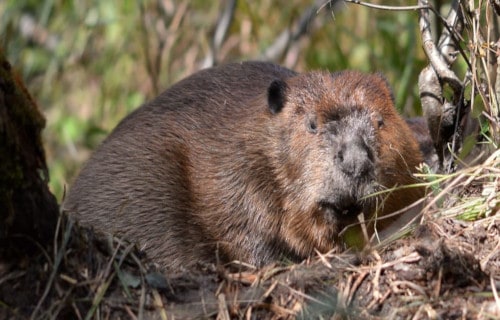
CCL: http://bit.ly/2xLZ0ap
North American Beaver Facts
- Our next featured animal in this compendium of Native North American Mammals is the remarkable North American Beaver.
- Firstly, this variety of the mammal remains one of only two existing species of beaver. Moreover, the other evolved as native to Europe.
- This remarkable animal also represents the third largest species of rodent on earth. In size, it follows only the capybara and the European Beaver.
- The fascinating rodent also remains well known for its habit of building its dams. These it constructs in lakes and streams, for instance.
- The largest dam by this species ever recorded occurred in northern Alberta, Canada. It was actually discovered by satellite imagery. It also measured an astonishing 2,790 ft (800 m) in length.
North American Beaver Physical Description
A mature adult North American Beaver averages about 44 lbs (20 kg) in weight. However, some rare, older individuals reach 110 lbs (50 kg).
In addition, the body length averages roughly 35 in (90 cm), and the tail averages 14 in (35 cm). The North American Beaver also lives as semi-aquatic, possessing webbed hind feet, clawed front feet, and a wide, flat tail.
Individuals also possess two coats of fur, with the outer coat being coarse and rough while the inner coat stays fine. The color of the fur generally displays a dark brown.
- Kingdom: Animalia
- Phylum: Chordata
- Class: Mammalia
- Order: Rodentia
- Family: Castoridae
- Genus: Castor
- Species: C. canadensis
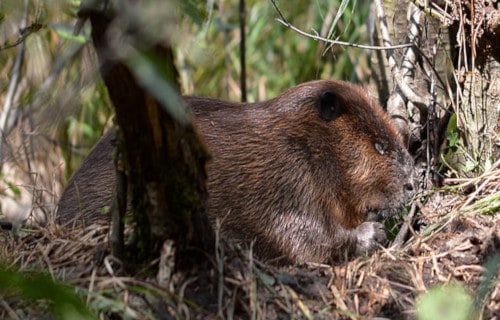
CCL: https://bit.ly/1xMszCg
North American Beaver Distribution, Habitat, and Ecology
The North American Beaver inhabits a wide swathe of North America. However, it remains most prevalent in Canada and the United States.
It also usually inhabits forests with running water nearby. This remarkable animal represents a primarily nocturnal creature. While it appears less agile on land, it tends to spend the majority of its time in the water.
It develops into an agile swimmer and sometimes stays submerged for as long as fifteen minutes.
The animal feeds as an herbivore, and prefers the bark and flesh of trees such as aspens, yet also eats weeds, sedges, and water lilies.
It builds incredible dams out of sticks, rocks, and mud. Often these dams comprise a joint effort of many beavers. Finally, the group creates the dams to keep the water deep enough to prevent freezing in the winter.
Red Wolf
Red Wolf Facts
- The next slot in this compilation of Native North American Mammals is the inspiring species known as the Red Wolf.
- This stately animal remains considered as the 6th rarest creature on earth and the rarest of all known wolves. The IUCN currently lists this beautiful canid as Critically Endangered.
- By the year 1980, only 20 individuals remained, all in captivity. As a result of a breeding program, it was subsequently reintroduced into the wild in North Carolina in 1987.
- Currently, roughly 200 individuals exist in captivity, while studies estimate its numbers in the wild to be slightly more than 100 individuals.
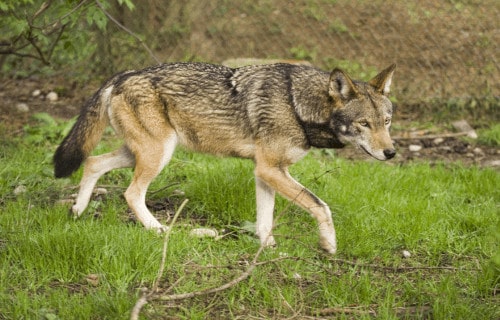
CCL: https://bit.ly/1ryPA8o
Red Wolf Physical Description
The lovely Red Wolf is a rather moderate-sized wild canine, approximately midway between the coyote and the gray wolf, with no noticeable degree of sexual dimorphism present.
Also, adults average 53.5 – 63 in (136 – 160 cm) in length and weigh an average of between 50 – 85 lb (23 – 39 kg). However, exceptional individuals sometimes attain larger sizes roughly equal to that of the gray wolf.
The fur also typically displays a tawny to gray in color, with numerous shades presented. In addition, white markings present themselves around the eyes and lips.
Its legs develop longer and slimmer than most related species, and the ears also grow proportionately much larger as well.
- Kingdom: Animalia
- Phylum: Chordata
- Class: Mammalia
- Order: Carnivora
- Family: Canidae
- Genus: Canis
- Species: C. rufus
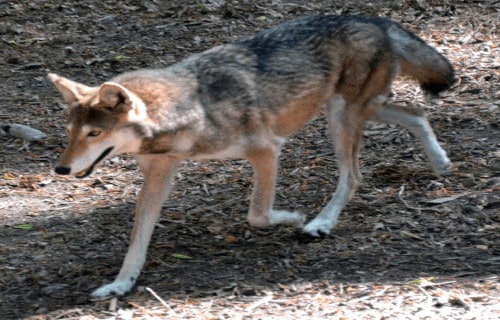
CCL: https://bit.ly/1jxQJMa
Red Wolf Distribution, Habitat, and Ecology
Evidence indicates that the range of the majestic Red Wolf once extended throughout what now forms the entire southeastern United States. This territory extended from Pennsylvania to Texas.
Due to conservation efforts and reintroduction efforts following its near extinction, its range currently covers five counties and 1.7 million acres (687,965 hectares) in various parts of North Carolina.
Since its historical distribution included a wide range of habitat types, experts assume it was a highly adaptable animal. The last known natural populations inhabited areas of swamps, prairie marshes, and even agricultural fields.
Evidence also indicates that the Red Wolf typically constituted an apex predator within its endemic range. As a carnivore, its diet usually includes smaller prey such as rabbits, raccoons, and rodents, but occasionally includes larger prey such as deer.
Polar Bear
Polar Bear Facts
- Our seventh listing here, in this article about Native North American Mammals is the absolutely magnificent Polar Bear.
- Firstly, growing to roughly the same size as the Kodiak, this magnificent variety of ursine represents one of the two largest species of bear on earth.
- It has also, rather understandably, evolved to fill a highly specific ecological niche, given the unique nature of its environment.
- Also, aside from the native Inuits who have long coexisted with this incredible animal, it was first described by explorers in 1774.
- Particularly appropriately, its distinctive scientific name, Ursus maritimus, in Latin, means maritime bear.
- Its primary threats include climate change and its related habitat loss. Consequently, the IUCN has classified this animal as Vulnerable.
Polar Bear Physical Description
While the gorgeous Polar Bear remains an especially large bear overall, it does display a rather marked degree of sexual dimorphism.
As a result, adult males also attain a weight of as much as 1,543 lb (700 kg), while the much smaller female only reaches about half of that.
In addition, the larger males reach a length of nearly 10 ft (3.05 m), while females do not quite reach 8 ft (2.44 m).
The extremely long and rather thick coat appears primarily white, though it tends to yellow slightly as the individual ages.
- Kingdom: Animalia
- Phylum: Chordata
- Class: Mammalia
- Order: Carnivora
- Family: Ursidae
- Genus: Ursus
- Species: U. maritimus
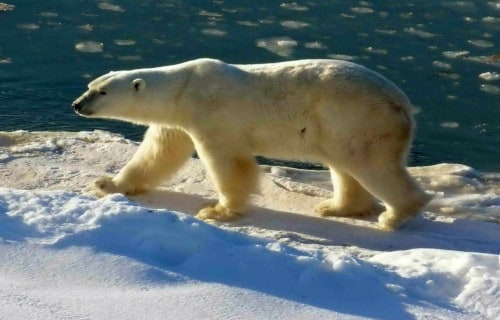
CCL: http://bit.ly/2P4R3Ic
Polar Bear Distribution, Habitat, and Ecology
Firstly, the native range of the truly impressive Polar Bear primarily lies within the Arctic Circle and its surrounding areas.
Though it occurs rather rarely, individuals sometimes appear as far south as Newfoundland, in Canada, in North America.
This animal is technically classified as marine mammal, since it often spends months at sea, on floating ice.
Meanwhile, the beautiful Polar Bear also actually ranks as the most carnivorous member of the bear family.
Though it remains an opportunistic hunter, its prey primarily consists of ringed seals and bearded seals.
Lower Keys Marsh Rabbit
Lower Keys Marsh Rabbit Facts
- Next on this listing of Native North American Mammals is the leporid with perhaps the saddest story, the Lower Keys Marsh Rabbit.
- Firstly, this little-known animal (Sylvilagus palustris hefneri) remains perhaps the most endangered species of rabbit currently known to man. It was named in honor of Hugh Hefner.
- It also ranks as the smallest and rarest of the three marsh rabbit subspecies. Quite sadly, all three face serious threats to their continue existence.
- These threats include vehicular traffic, illegal dumping, domestic animals, invasive species, and, of course, climate change. For these reasons, the IUCN lists it as Endangered.
- This species also remains isolated to the a tiny area by the rise in sea level and human habitation in its area. Finally, this isolation may be the cause for the extreme specialization of the species.
Lower Keys Marsh Rabbit Physical Description
The marvelous Lower Keys Marsh rabbit forms a small-to-medium sized species. Individuals also average about 15 in (380 mm) in length and 2.2-3.8 lbs (1.0-1.7 kg) in weight. However, no sexual dimorphism is exhibited.
Further, its hind feet range from 2.5-3.1 in (65-80 mm) in length, and the ears range from 1.7-2.4 in (45- 62 mm) long.
In addition, the fur of this rabbit grows short with dark brown shades, and a grayish-white belly. But the tails appear dark brown.
- Kingdom: Animalia
- Phylum: Chordata
- Class: Mammalia
- Order: Lagomorpha
- Family: Leporidae
- Genus: Sylvilagus
- Species: S. palustris
- Subspecies: S. p. hefneri
Lower Keys Marsh Rabbit Distribution, Habitat, and Ecology
The wonderful Lower Keys Marsh Rabbit, as the name indicates, inhabits the Florida Keys, in the United States. Yet sadly, it now finds itself limited to an extremely tiny portion of the area.
This range includes a few of the larger Lower Keys. Specifically, however, this covers Boca Chica, Saddlebunch, Sugarloaf, and Big Pine Keys and the small islands near these Keys.
Further, research determined the habitat occupied by species to be limited to 633 acres in 1995, with only 81 suitable habitats.
It typically chooses areas of marsh, as the name implies. In addition, it prefers elevated sections, with sufficient plant cover for food, nesting, and protection.
The animal has also become dependent on several specific plants for its diet. These include certain grasses, herbs, and sedges. Rather unfortunately, most of these have now been decimated by invasive species.
Ocelot
Ocelot Facts
- The mesmerizing Ocelot comes next among our Native North American Mammals, for your appreciation.
- While most wildcats see their numbers dwindling rapidly, this beautiful feline holds the distinction of being one of the few wild felines that the IUCN lists as a Species of Least Concern.
- Previously, it had been listed as Endangered until 1996. As of that time, efforts at protecting the creature had allowed its numbers to bounce back significantly.
- In the past, the Ocelot was widely hunted for its pelt, which was regarded as highly valuable. Thankfully, this practice was banned decades ago throughout its endemic territory.
Ocelot Physical Description
The remarkable Ocelot lists as a moderate-sized variety of wildcat. The species also displays a moderate degree of sexual dimorphism. Females weigh as much as 25 lb (11.3 kg) while males reach a weight of as much as 34 lb (15 .5 kg).
This beautiful mammal attains an average overall body length of between 22 – 39 in (55 – 100 cm). The tail adds an additional 10 – 16 in (25.5 – 41 cm) to the total length of the feline.
In color, the fur of the Ocelot is predominantly a tawny yellow with numerous black markings. The neck and belly typically display a white coloring. Its fur usually remains short on the belly but grows longer on the back.
The small ears also usually remain rounded and display a prominent white spot. The eyes most commonly show a brown color that reflects patterns of gold in bright light.
- Kingdom: Animalia
- Phylum: Chordata
- Class: Mammalia
- Order: Carnivora
- Family: Felidae
- Genus: Leopardus
- Species: L. paradis
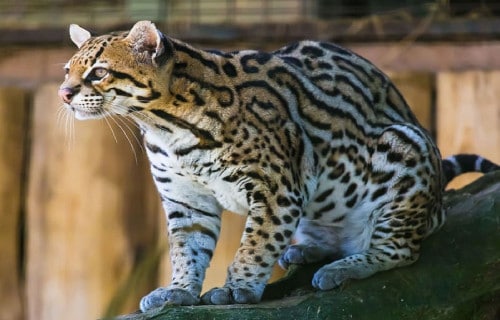
CCL: https://bit.ly/1ryPA8o
Ocelot Distribution, Habitat, and Ecology
Most notably, the actual range of the amazing Ocelot covers an extensive region which extends through portions of the United States, in North America, through Mexico and much of Central America and South America.
Population densities also vary rather widely, however, with the highest known density occurring in Panama.
This particular animal inhabits a rather wide range of habitats, which has helped its numbers to rebound from a few decades ago.
These habitat types also include tropical rainforests, scrublands, mangrove forests, and even coastal marshes. It typically prefers lower elevations, but some populations occur as high as 9,843 ft (3,000 m).
Like all wildcats, the Ocelot also has a carnivorous diet. Its primary prey consists of such small animals as rabbits, rodents, fish, birds, opossums, armadillos, and occasionally small reptiles and even insects.
Hunting typically occurs during the evening and at night, but sometimes happens during the day when necessary.
Reindeer
Reindeer Facts
- Placing tenth on this compendium of Native North American Mammals is the breathtakingly beautiful Reindeer, known far and wide.
- However, the name Reindeer applies in particular to a variety of deer native to a specific, and rather harsh, section of the world.
- Interestingly, individuals of this impressive species often vary much more widely in color and size than most animals.
- In addition to the simple facts of its beauty, one fact sets this creature apart from all other known animals.
- In a unique adaptation to the climate in which it evolved, reindeer remain the only known mammals capable of seeing ultraviolet light.
- Though still numerous, its numbers appear to be in decline. The primary reason for this seems to be climate change.
Reindeer Physical Description
The color of the fur of the Reindeer varies considerably, both in individuals and with the season. Its coloring ranges from off-white to a dark brown or sometimes mottled.
In addition, contrary to popular belief, both sexes develop antlers. However, the antlers of the female generally stay significantly smaller than those of the males.
Yet overall, the antlers of this beautiful ruminant average up to 39 in (100 cm) in length and 53 in (135 cm) in beam width.
The males grow larger than the females and will average roughly 7 ft(2.13 m) in length, and weigh an average of 400 lb (182 kg). A few rare males sometimes attain a weight of as much as 700 lb (318 kg).
Typically, an adult also stands an average of 59 in (150 cm) tall at the shoulder.
- Kingdom: Animalia
- Phylum: Chordata
- Class: Mammalia
- Order: Artiodactyla
- Family: Cervidae
- Genus: Rangifer
- Species: R. tarandus
Reindeer Distribution, Habitat, and Ecology
The powerful and majestic Reindeer evolved as native to the Arctic and subarctic regions of the world.
However, the animal migrates within its region of habitation, which includes much of the tundra regions of the Northern Hemisphere. This range once extended much further south than it does today.
Being a large ruminant, the Reindeer primarily feeds upon lichens, reindeer moss, grasses, sedges, and the leaves of willows and birches.
The antlers of this animal grow the second largest of any species of deer. In this, they rank as second only to the moose.
The mammal represents the only member of the deer family in which the females also grow antlers.
Steller Sea Lion
Steller Sea Lion Facts
- Placed next among the other Native North American Mammals is the quite physically intimidating Steller Sea Lion.
- This massive animal ranks as the largest of all forms of eared seals. In fact, among pinnipeds, only the walrus and 2 species of elephant seals grow larger.
- Further, the IUCN currently lists this magnificent ocean creature as Near Threatened.
- This sea lion was named in honor of Georg Wilhelm Steller who was the German botanist and zoologist who first described the species, in 1741.
- Its numbers have, for reasons still undetermined, decreased substantially in the past 30 years, over much of its range. Therefore, numerous, though sadly, not all, countries have banned the slaughter of these impressive creatures.
- The animal now has protection via the Marine Mammal Protection Act in the United States. That country controls the largest portion of its endemic range.

Photo: Oregon Department of Fish & Wildlife
CCL: https://bit.ly/3fVZDVt
Steller Sea Lion Physical Description
The powerful Steller Sea Lion displays a pronounced degree of sexual dimorphism. Females grow until the fifth year, while the larger males grow until the eighth year. Males also typically grown slightly longer and heavier than females.
The males also have a much broader and stockier build than the females. Males average roughly 10.7 ft ) 3.3 m) in length and weigh as much as 2,470 lb (1,120 kg). Females attain a length of about 9.5 ft (2.9 m), and a weight of up to 770 lb (350 kg).
Both genders typically show a tawny or reddish color by nature as adults. By contrast, however, the newborn pups appear almost black in color.
Adult males also tend to have a dark tuft of hair around the neck, consequently giving them the appearance of having a small mane of hair.
- Kingdom: Animalia
- Phylum: Chordata
- Class: Mammalia
- Order: Carnivora
- Family: Otariidae
- Genus: Eumetpoias
- Species: E. jubatus

Public Domain Image
Steller Sea Lion Distribution, Habitat, and Ecology
The Steller Sea Lion inhabits a decidedly northern territory range from the Sea of Okhotsk to an island off the coast of northern California, in the United States.
Its endemic range once extended much further.
Not surprisingly, it has been reduced by a combination of climate change and direct interaction with humans (hunting).
These skilled marine predators feed on a wide range of cephalopod and fish species, sometimes even on small species of seals.
In addition, its only known natural predators include orcas and larger sharks.
The mammals typically congregate in large groups for mating and rearing the young, a process usually occurring on the beaches of remote islands. A single birth is most common, though multiple births do happen occasionally as well.
Cougar
Cougar Facts
- Next on this list of Native North American Mammals is the feline that many consider to be among the most beautiful on earth, the Cougar.
- With the scientific name of Puma concolor, it is a rather gorgeous large feline native to the Americas, and it is more nearly similar to smaller felines, including the domestic cat than to any other known subspecies of the lion.
- This breathtaking feline is a slender and agile member of the cat family and is also the fourth-largest feline species.
- The mammal is also adept at climbing, which allows it to evade canine competitors. Although not strongly associated with water, the cougar can swim.
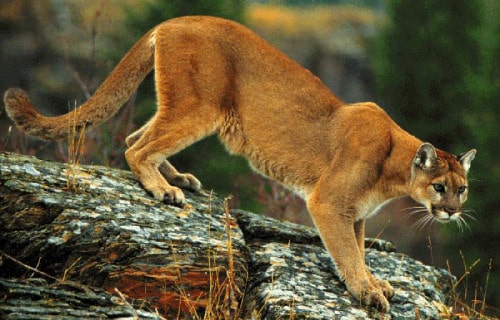
Cougar Physical Description
The Cougar exhibits sexual dimorphism in terms of size. Adults average roughly 24-35 in (60-90 cm) tall at the shoulders. Adult males are also about 7.9 ft (2.4 m) long, nose-to-tail, and females are usually up to 6.7 ft (2.05 m).
On the other hand, of this length, 25-37 in (63-95 cm) of this is only the tail.
The male typically weighs 115-220 lbs (53-100 kg) while females – between 64-141 lbs (29-64 kg).
The head of the mammal is round and its ears are erect. Its powerful forequarters, neck, and jaw serve to grasp and hold large prey.
It also has five retractable claws on the forepaws and four on the hind paws. The larger front feet and claws are adaptations to clutching prey.
In addition, it has large paws and proportionally the largest hind legs in the cat family.
- Kingdom: Animalia
- Phylum: Chordata
- Class: Mammalia
- Order: Carnivora
- Family: Felidae
- Genus: Puma
- Species: P. concolor
Cougar Distribution, Habitat, and Ecology
The truly stunning Cougar also has the greatest range of any wildcat in North America. Consequently, it can be found from parts of Canada to the Andes in South America.
It has also evolved to be highly adaptable, and thus inhabits a wide variety of habitat types within its native range. Most notably, these include forests, lowlands, mountains, and arid climates.
This physique also allows the Cougar some of the greatest leaping and short-sprint ability of any animal. It is able to jump as high as 18 ft (5.5 m) in one bound, and also as far as 40-45 ft (12-14 m) horizontally.
The top running speed of the animal also ranges between 40-50 mph (64-80 kph), but they are best capable of short, powerful sprints rather than long chases.
A rather successful generalist predator, the Cougar will eat any animal it can catch, from insects to large ungulates in excess of 1,100 lbs (500 kg). Certainly, it exhibits opportunistic behavior.
Like all felines, it is an obligate carnivore. This means that it needs to feed exclusively on meat to survive. Investigations in Yellowstone National Park showed that elk, followed by mule deer, were the animal’s primary targets.
Opossum
Opossum Facts
- Our next creature on this posting of Native North American Mammals is one that many people do not like, despite its harmlessness, the Opossum.
- Firstly, a total of 103 varieties of Opossum exist. The one pictured here represents the Virginia Opossum. It is native to the Virginia region of the United States.
- It also served as the first of the 103 species to be given the name. Further, the name itself came from the language of the local Algonquin tribe of Native Americans.
- Moreover, the species has particularly unspecialized biology, flexible diet, and an impressive reproductive strategy. This makes it a successful colonizer and adapter to diverse locations and conditions.
- This particular Opossum also remains one of three mammals which share the record for the shortest gestation period on earth: only 12 days.
Opossum Physical Description
Quite understandably, the various forms of Opossum display physical variations. However, many basic characteristics remain true to all of them. Only a few of them display a noticeable degree of sexual dimorphism.
The varying species have a head and body length ranging from 4.7 – 37 in (12 – 94 cm). However, the majority of the different types grow to about the size of an average house cat.
Further, most display a narrow head with a long snout. The feet have long, powerful claws. In addition, the back feet each have one opposable digit.
Although coloring differs between them, each species has one other physical trait in common. Like many monkeys, the tail is prehensile.
- Kingdom: Animalia
- Phylum: Chordata
- Class: Mammalia
- Order: Didelphimorphia
- Family: Didelphidae
Opossum Distribution, Habitat, and Ecology
Most notably, all known species of Opossum inhabit the Western Hemisphere. Obviously, however, habitats vary among the different species. Yet the great majority inhabit temperate forests.
While individuals often occupy an abandoned burrow from some other animal, most do not dig their own. Moreover, most appear nocturnal in nature. Most prefer dark, sturdy locations for a nest, either below or above ground.
The Opossum also developed a unique defense mechanism. This strategy it employs when either harmed or threatened. At such a time, an involuntary physiological response takes effect.
The creature loses consciousness and its body becomes exceedingly stiff. Its lips curl back, saliva foams from the mouth, and a foul-smelling fluid is secreted from a special gland.
The animal may be prodded, poked, and even moved without reaction. The animal literally looks, feels, and even smells as if it has been dead for some time.
This physiological condition typically lasts for between 40-240 minutes, after which the animal slowly regains consciousness.
In addition, it feeds as an opportunistic omnivore with a very broad diet. Most primarily feed on carrion, but also eat frogs, insects, birds, snakes, small mammals, earthworms, and slugs. It also seems quite fond of various fruits.
Finally, the animal usually lives a solitary and nomadic life in nature.
Pygmy Rabbit
Pygmy Rabbit Facts
- Our next Native North American Mammal is the tiny, as the name implies, but marvelous, Pygmy Rabbit.
- Most notably, this gorgeous animal represents the world’s smallest known species of rabbit. But its size isn’t its only interesting trait.
- Sadly, its habitat range also qualifies as extremely small, at least compared to some related species. Further, this continues to shrink.
- Yet despite this factor, its numbers appear to be sufficient and stable. For this reason, the IUCN currently lists this delightful small mammal as Least Concern.
- However, this could change, if conditions do. Since the Pygmy Rabbit remains dependent upon specific habitat requirements, it could be threatened by ongoing climate change.
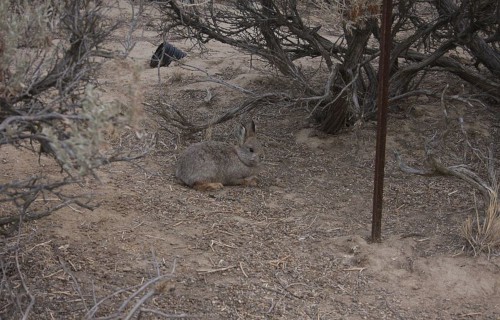
CCL: https://bit.ly/1ryPA8o
Pygmy Rabbit Physical Description
The gorgeous Pygmy Rabbit rather easily earns the name. That’s because adults of this tiny species average only about 1.1 lb (0.5 kg).
It also displays a moderate degree of sexual dimorphism, with females being slightly larger than males.
with average adult weighing approximately 1.1 lbs (500 grams) or less. They average a body length of 9.3-11.6 in (23.5-29.5 cm).
Like many species of animal, the females are slightly larger than males. The Pygmy Rabbit is distinguishable from other leporids by its small size, short ears, gray color, small hind legs, and lack of white fur on the tail.
- Kingdom: Animalia
- Phylum: Chordata
- Class: Mammalia
- Order: Lagomorpha
- Family: Leporidae
- Genus: Brachylagus
- Species: B. idahoensis
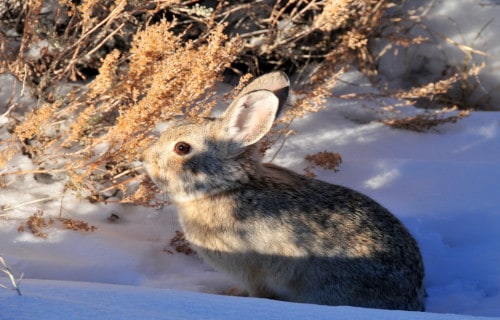
CCL: https://bit.ly/1ryPA8o
Pygmy Rabbit Distribution, Habitat, and Ecology
Most notably, the stunning Pygmy Rabbit inhabits a specific portion of the western United States. This consists of the Great Basin region, as well as adjacent mountainous areas.
Yet more specifically, it inhabits altitudes ranging from 4,495 – 7,005 ft (1,370 – 2,135 m), depending on location. Further, it prefers areas having deep, loose soil, dense, tall sagebrush.
But each individual or family has its own tiny territory. Indeed, research also indicates that most individuals never stray more than 330 ft (100 m) from the burrow. Also, it is one of only two related species in North America to dig its own burrow.
The Pygmy Rabbit feeds primarily upon sagebrush in most areas it inhabits. In turn, its own principal predators include weasels, coyotes, red foxes, badgers, bobcats, owls, and hawks.
Margay
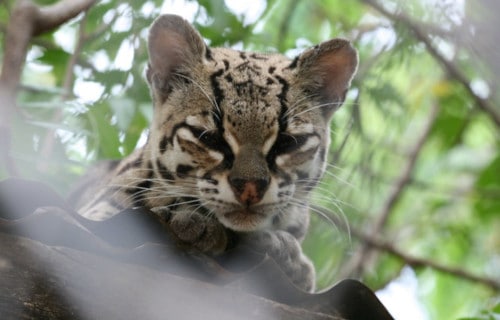
CCL: https://bit.ly/1jxQJMa
Margay Facts
- The next magnificent animal in this article on Native North American Mammals is another gorgeous feline, the Margay.
- This wild cat is a spotted feline native to both North and South America, and also an extremely solitary type of wildcat.
- The feline also remains a predominantly nocturnal animal and typically prefers extremely remote sections within its native range.
- The IUCN lists the Margay as Near Threatened. In some regions, people also hunt an average of 14,000 of these wildcats for the fur each year which has resulted in an extreme decrease in population.
- In addition, habitat loss and climate change continue to present extreme challenges to the reclusive small mammal.
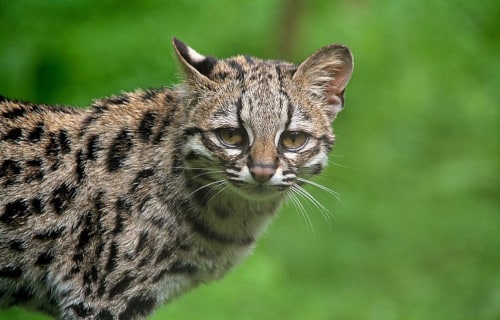
CCL: http://bit.ly/2IjEG4n
Margay Physical Description
Firstly, the Margay only attains a weight of as much as 8.8 lb (4 kg). The body length averages about 31 in (79 cm) and the tail measures roughly 20 in (51 cm) in length.
Its fur displays a light brown and appears splotched with dark brown or black blotches and streaks. The stomach is generally white, and the tail has multiple bands, with a black tip.
The rather remarkable Margay evolved to be principally arboreal in nature and individuals may spend their entire lives within the canopy, never coming down.
It also has a remarkable evolutionary adaptation in its ankles. These evolved to be so flexible that the cats can actually walk down a tree trunk headfirst.
The feline also remains one of only two known to possess this rather unique ability.
- Kingdom: Animalia
- Phylum: Chordata
- Class: Mammalia
- Order: Carnivora
- Family: Felidae
- Genus: Leopardus
- Species: L. wiedii
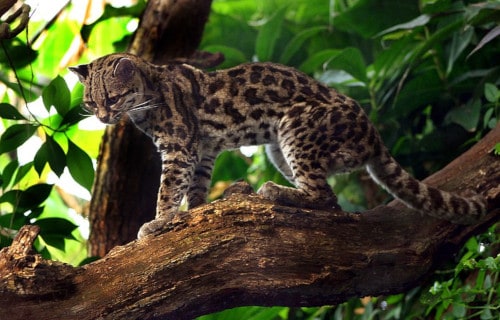
CCL: http://bit.ly/2IjEG4n
Margay Distribution, Habitat, and Ecology
Most notably, perhaps, the gorgeous Margay inhabits a range extending from southern Mexico to slightly beyond Central America.
This rather amazing wildcat lives almost exclusively in areas of dense forest with typical habitats including tropical dry forests, evergreen forests, and cloud (or fog) forests.
The Margay will also occasionally establish its territory in commercial plantations which unfortunately further increases its vulnerability to hunting.
Evidence also indicates that this beautiful creature once ranged as far north as the states of Georgia and Florida.
Hoary Marmot
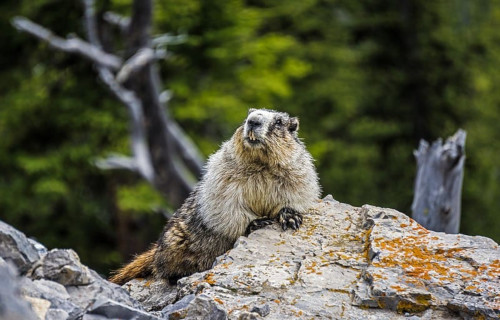
CCL: https://bit.ly/1xMszCg
Hoary Marmot Facts
- The next of our choices for inclusion in this compendium of Native North American Mammals is the awesome Hoary Marmot.
- The most notable things about the remarkable creature might surprise you. That’s because this animal actually represents a variety of ground squirrel. Further, it ranks as the largest in its range.Furthermore, this amazing mammal remains a surprisingly intelligent creature. This is evidenced by its behavior patterns. While the colony feeds, a few individuals watch for predators.
- Therefore, if one is seen, the ever vigilant sentry quickly emits a high-pitched warning cry. Due to the nature of this outcry, in some parts of its range it has been given the name of whistle pig.
- Quite thankfully, its numbers appear to be stable for the moment. For this reason, the IUCN currently ranks it as Least Concern. However, that could potentially change due to the actions of man.
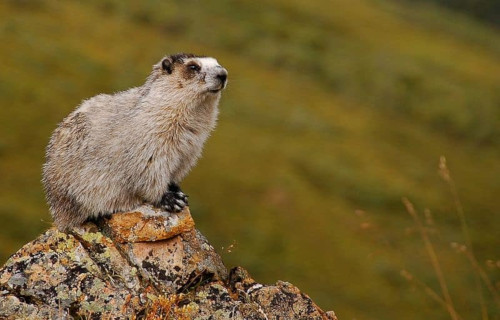
CCL: https://bit.ly/1jxQJMa
Hoary Marmot Physical Description
Firstly, the impressive Hoary Marmot remains a large type of ground squirrel. In addition, it has a bulky build, with a broad head, and short, but powerful limbs. Yet, it also displays a marked degree of sexual dimorphism.
Therefore, in its case, the males grow much larger than females in both it and its subspecies. Mature males average a body length of 22 in (55.9 cm). These same individuals also have a tail averaging 9.8 in (25 cm).
But the females only average 17.3 in (43.9 cm) in body length, and with a tail of 6.7 in (17 cm). Additionally, females tend to be somewhat less stocky in build. Weights for both genders vary significantly, depending on the season.
Further, the term hoary remains a reference to the fur on its upper back and shoulders. That’s because this displays a silvery-gray color. This is in stark contrast to the tan or reddish-brown color the rest of the body shows.
- Kingdom: Animalia
- Phylum: Chordata
- Class: Mammalia
- Order: Rodentia
- Family: Sciuridae
- Genus: Marmota
- Species: M. caligata
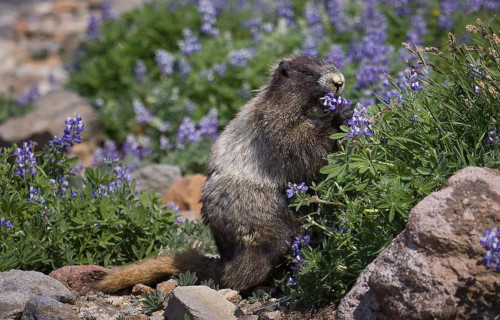
CCL: https://bit.ly/1p2b8Ke
Hoary Marmot Distribution, Habitat, and Ecology
Most notably, the fabulous Hoary Marmot inhabits a limited portion of northwest North America. This region includes parts of Idaho, Washington, and Alaska, in the United States, and British Columbia in Canada.
With further precision, it also has specific habitat preferences. These primarily consist of mountainous alpine ecosystems. It also thrives at altitudes of from sea level up to as much as 8,200 ft (2,500 m).
Within that range, individuals may live in either areas of grasslands and sedge, or rocky regions. But it also inhabits several small islands near Alaska. There, it tends to live near the shoreline, having proven adaptable.
The Hoary Marmot appears to be entirely herbivorous in nature. This fascinating large rodent mainly consumes grasses, sedge, leaves, and flowers. It also evolved as diurnal in nature, like many mammals.
Additionally, the animal has a highly prolonged hibernation period. It commonly spends 7-8 months of the year in this state. This period it spends in large, deep burrows, commonly shared by a colony of as many as 36 individuals.
Pallid Bat
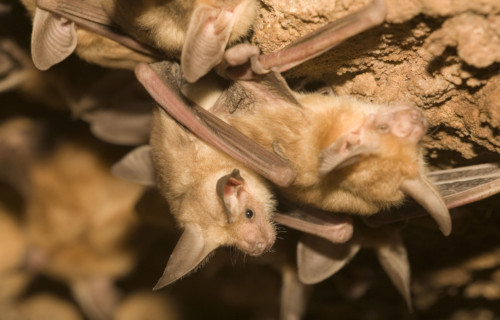
CCL: https://bit.ly/3bkr0Dw
Pallid Bat Facts
- Appearing next in this compilation of Native North American Mammals is the surprising animal known as the Pallid Bat.
- Firstly, the distinctive term Pallid Bat serves as the common name for the species of bat with the bulky scientific name of Antrozous pallidus. Secondly, this surprising creature also holds a moderate claim to fame, at least in scientific circles.
- That holds true due to a claim that few species can make. That remains the fact that the mammal also presently remains the only species within its genus. It also bears a close relationship with another variety of bat, the Van Gelder’s bat.
- This amazing species also distinguishes itself from other bats in yet another, more important manner. That’s due to a rather startling evolutionary divergence. Quite amazingly, it does not always employ echolocation to locate its food.
- Although it does certainly have and use this ability, it also sometimes hunts in a different fashion. In this instance, the animal uses its large ears to locate its food. In this case, it employs them to locate prey, usually insects, on the ground.
- Quite fortunately, the fascinating Pallid Bat appears to continue to be be abundant throughout the entirety of its natural range. Due to this, the IUCN currently lists the animal as Least Concern on its Red List of Threatened Species.
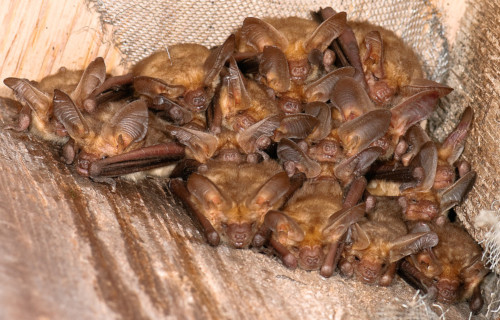
CCL: https://bit.ly/2UDM1lN
Pallid Bat Physical Description
Despite its other unique and distinctive characteristics, the fascinating Pallid Bat nevertheless remains a physical modest-sized species. But, it does remain unlike the vast majority of the other types of bats in the world in one particular regard.
That holds true because the fascinating species displays no noticeable degree of the trait of sexual dimorphism. As a result of the lack of this genetic trait, mature adults of both genders attain roughly the same average head-and-body length.
More precisely, this equals a measurement of about 2.4 – 3.35 in (6.0 – 8.5 cm). The over-sized tail may additionally account for 1.4 – 2.25 in (3.5 – 5.7 cm) of this length. This type of bat also achieves an average wingspan measuring roughly 15 – 16 in (38 – 40 cm).
This remarkable animal further develops a somewhat distinctive fur. To be more precise, this fur reportedly has a feel akin to that of soft wool. This fascinating pelage almost exclusively presents a highly uncommon two-tone color pattern.
That’s due to the fact that it appears as light brown to a cream color on the upper side of the small body. Meanwhile, the rest of the body diverges from this. In a moderately sharp contrast, the Pallid Bat presents a decidedly pale white color on the under side.
- Kingdom: Animalia
- Phylum: Chordata
- Class: Mammalia
- Order: Chiroptera
- Family: Vespertilionidae
- Genus: Antrozous
- Species: A. pallidus
Pallid Bat Distribution, Habitat, and Ecology
Most notably, the remarkable Pallid Bat inhabits a quite extensive habitat range compared to other varieties of bats. To the great surprise of many people, the truly remarkable small mammal appears throughout a large portion of the continent of North America.
More precisely, this bat lives in areas extending from British Columbia, in Canada, through the western United States, and as far as central Mexico. Also, for currently unknown reasons, one small population of the creature also currently resides in Cuba.
Regardless of its exact geographical location, however, the impressive mammal displays a marked preference for a specific habitat type. That consists mainly of desert or at least semi-arid regions within its native range. This is a trait shared by many related species.
Although it roosts opportunistically, it most frequently prefers stony outcroppings. But it will also opportunistically roost in regions such as pine and oak forests, and even farmland. It also often has two roosts, one for day use and one for the night.
In another deviation from the patterns displayed by most bats, it does not mainly consume flying insects. It typically hunts its prey on the ground. Although it will take virtually any arthropod it finds, this typically consists of crickets, but sometimes even includes scorpions.
As a result, the diet of individual specimens of Pallid Bat varies somewhat. This occurs because it principally consumes various locally prevalent arthropods. In fact, this insectivore often consumes as much as half its body weight in prey every night.
Ring-Tailed Cat
Ring-Tailed Cat Facts
- Our next choice for inclusion in this compendium of Native North American Mammals is one many remain unaware of, the Ring-Tailed Cat.
- The descriptive term for this feline excellently serves as one of several common names for a remarkable variety of mammal. Despite that particular term for it, the visually impressive creature has absolutely no relationship to felines.
- A few of its other commonly used names, meanwhile, include such terms as the miner’s cat, the ringtail cat, and the bassarisk. On the other hand, its scientific name remains that of the hard to pronounce term of the Bassariscus astutus.
- It received this tongue-twisting name at the time of its first scientific recognition, in the year 1830. This scientifically important recognition occurred at the hands of the respected German zoologist, Martin Hinrich Carl Lichtenstein.
- Most fortunately, the marvelous animal appears to be maintaining a population base that is both sufficient and stable. This seems to hold true throughout the entirety of its native range. The IUCN, therefore, presently lists it as Least Concern.
- The remarkable mammal nonetheless must be considered to be facing at least some risks. Given mans encroachment on its territory, habit loss poses a very real threat. Its greatest danger, though, no doubt comes in the form of climate change.
Ring-Tailed Cat Physical Description
Although the remarkable Ring-Tailed Cat remains an impressive species, it doesn’t earn that status due to sheer size. In point of fact, it’s a comparatively small variety of mammal. Somewhat surprisingly, it actually remains smaller than the average house cat.
The animal further distinguishes itself from may other mammals in another way. This particular species displays no noticeable degree of the physiological trait of sexual dimorphism. While perhaps not technically rare, this does remain somewhat uncommon.
Mature adults of both genders attain an average body length of roughly 12 – 17 in (30 – 42 cm). These same individuals also develop a tail that also averages about the same length. Its weight also remains slight, measuring an average mass between 1.5 – 3.3 lb (0.7 – 1.5 kg).
The coloring of both genders of the Ring-Tailed Cat typically present as a buff to dark brown color, in random patches, on the body. The tail, however, displays the marvelous pattern of 14 – 16 black rings, which serves as the source of one of the common names.
- Kingdom: Animalia
- Phylum: Chordata
- Class: Mammalia
- Order: Carnivora
- Family: Procyonidae
- Genus: Bassariscus
- Species: B. astutus
Ring-Tailed Cat Distribution, Habitat, and Ecology
The magnificent Ring-Tailed Cat inhabits a moderately large section of the globe. This range covers a significant portion of the continent of North America. More specifically, though, this region includes part of the United States and the country of Mexico.
Within this relatively extensive range, though, the animal evolved as highly adaptable. As a result, it inhabits a wide range of habitat types. These include such regions as deserts, semi-arid areas, pine and oak woodlands, conifer forests, and chapparal.
The animal also appears within a broad range of altitudes. Individuals occur at heights of as much as 9,514 ft (2,900 m). Most though, live from sea level to around 4,593 ft (1,400 m) above sea level. It further prefers areas of canyons, rocky outcroppings, and talus.
The awesome Ring-Tailed Cat evolved as omnivorous in nature, like related species. Although it does display a decided preference for meat, it also consumes a moderate amount of vegetation. Its prey mainly consists of small animals, such as birds and frogs.
Its own predators, meanwhile, consist of several different species. These include such animals as coyotes, raccoons, bobcats, owls, and hawks. It does, however, have one means of defense. It evolved a gland that releases a highly pungent musk when threatened.
Swift Fox
Swift Fox Facts
- Appearing in the next spot among our selections to represent Native North American mammals comes the amazing animal best known as the Swift Fox.
- The simple yet descriptive term for the animal serves as the commonly used name for a small variety of wild canine. In scientific circles, however, this remarkable mammal bears the name of Vulpes velox. By either term, though, it’s an important species.
- That fact may surprise some people, though, if they make assumptions based on size. That’s due to the fact that this animal represents the smallest of the wild dogs varieties native to its part of the world. Size, however, remains unimportant in Nature.
- Though long known to the Indigenous Peoples of the region, Captain Lewis of the Lewis and Clark expedition became the first known European to spot the animal. That first recorded encounter occurred on July 6, 1805, as noted in his journal.
- At that time, the marvelous mammal appeared in large numbers. Sadly, though, as settlers moved into its region, its numbers began to dwindle. By the 1930’s, it ranked as an endangered species, mainly due to control programs targeting coyotes and wolves.
- Thankfully, however, concerted reintroduction programs began in 1983. Since that time, its population appears to have rebounded successfully. The IUCN, therefore, currently lists the Swift Fox as Least Concern of its red List of Threatened Species.
- Yet, this status remains sensitive to various factors. For now, it only occupies about 40% of its original range. Habitat loss, due to continued human expansion, additionally remains a factor. Its greatest threat, though, no doubt consists of climate change.
Swift Fox Physical Description
While visually pleasing to those who appreciate wild canines, the Swift Fox does not garner that appreciation due to sheer size. Not only does it rank as the smallest wild canid in its part of the globe, in fact it qualifies as among the smallest of related species in the world.
Other than sheer size, it shares many traits with the other canids on the planet. Among those is the physiological principal of sexual dimorphism. In its particular case, the males of the species develop as larger than the females. The difference, though, remains quite minor.
Overall, the mammal averages a height of roughly 12 in (30 cm). In length, meanwhile, it typically reaches about 31 in (79 cm), from the head to the end of the tail. The weight of the animal, furthermore, generally only ranges from between 5 – 7 lb (2.3 – 3.2 kg).
In terms of appearance, the Swift Fox displays a pattern of colors that provides natural camouflage in its native environment. This typically consists of a fairly dark tan, almost grayish shade. It also usually presents a tannish yellow on its sides and the legs.
The rest of the body presents a different color pattern, though. Its chest, throat, and stomach typically present colors ranging from off-white to a pale yellow. Black patches also appear on its muzzle. Quite distinctively, the ears also develop as comparatively large.
- Kingdom: Animalia
- Phylum: Chordata
- Class: Mammalia
- Order: Carnivora
- Family: Canidae
- Genus: Vulpes
- Species: V. velox
Swift Fox Distribution, Habitat, and Ecology
Sadly, the beautiful Swift Fox once had a much more extensive range of habitation than it does today. That’s because it evolved as native to a relatively wide swathe of North America. In fact, that territory covered parts of two of the three countries on the continent.
More precisely, it lived from western Canada, through the Great Plains to Texas, in the United States. Unfortunately, it disappeared from Canada by 1938. Even though it’s since been reintroduced, its numbers remain few, appearing in scattered small groupings.
The endemic habitat of this marvelous small mammal consists of regions of deserts and shortgrass prairies. In these environments, its natural coloring allows it to blend in successfully, aiding its survival. There, the creature lives in dens it builds in sandy soil.
The common name of Swift Fox derives from the simple fact that this animal remains capable of impressive speeds. Individuals sometimes reach speeds in excess of 31 mph (50 kph). This both aids the species in hunting and evading its own natural predators.
In terms of dietary habits, it’s technically classified as a carnivore. This species actually feeds as an omnivore, however. It also tends to feed quite opportunistically. Mainly consuming meat, this small predator hunts and feeds on any small animals it can catch.
This diet most commonly includes such prey as small reptiles, birds, amphibians, fish, insects, and mammals. It does nonetheless consume small quantities of plant matter. Local grasses and berries sometimes serve as a supplement for this intrepid hunter.
Native North American Mammals
We sincerely hope that you have enjoyed reading this collection of articles about native North American Mammals. We certainly enjoyed compiling if for you, our readers. These magnificent creatures all need and deserve our help and protection, especially now.
That’s because each of these marvelous animals plays a role in Nature, and the loss of any of them diminishes the world. Let us do all that we can to protect them and ensure their future. For without them, the world becomes a dimmer place for the rest of us.
Check out our other articles on Earth’s Geothermal Marvels, Breathtaking Asian Species, North American Gulches and Canyons, Earth’s Extremely Threatened Flowers, Wonderful Wild Cats of the World
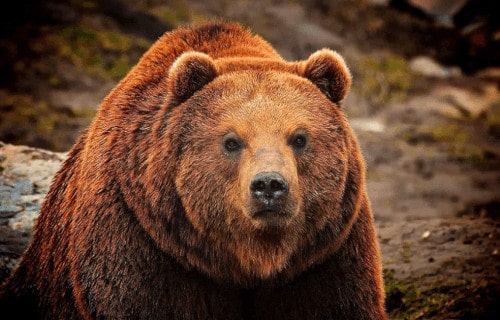
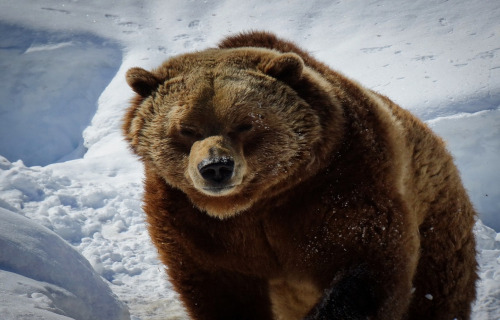
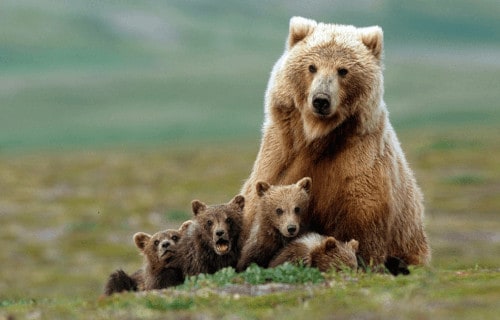
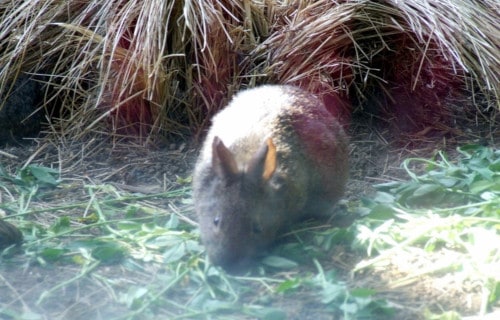
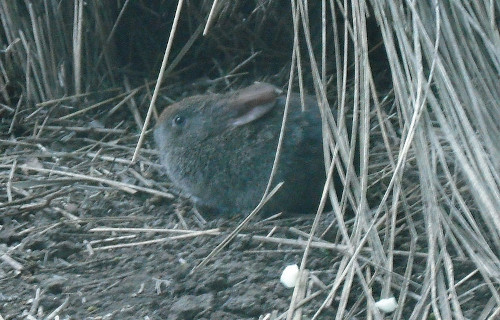
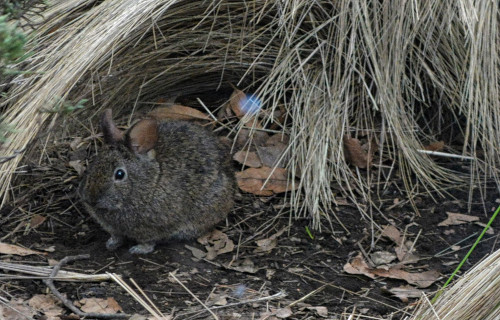
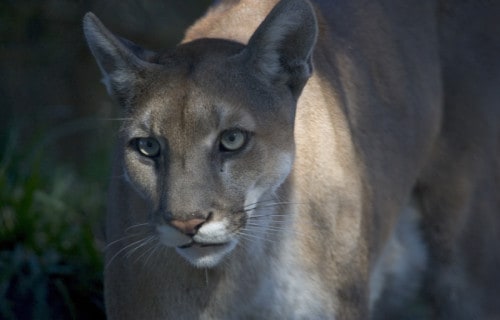
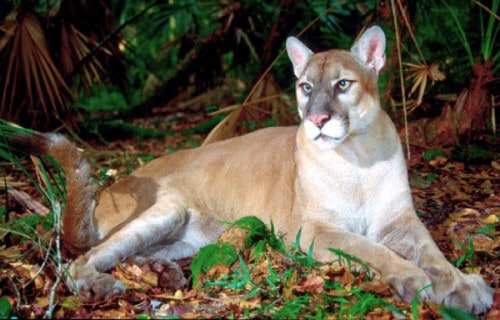

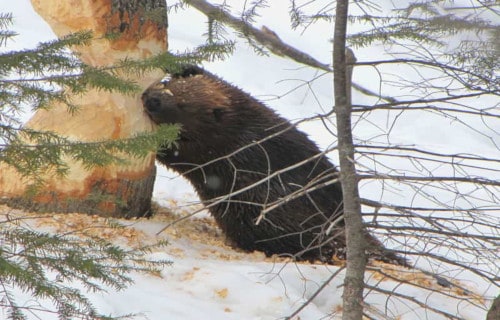
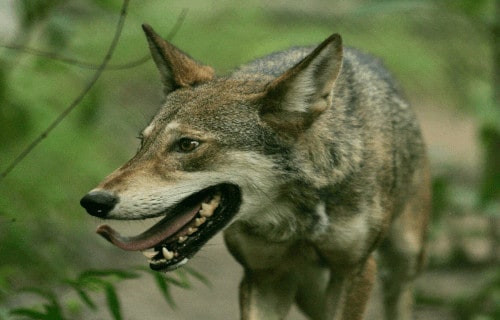

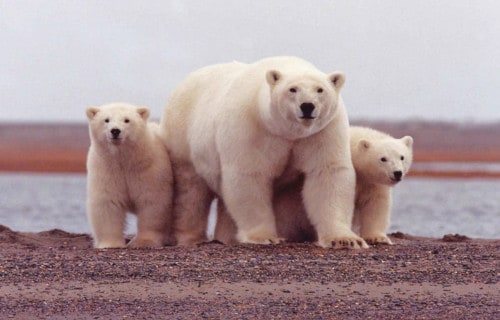
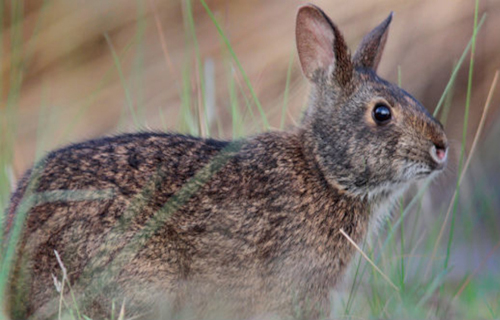
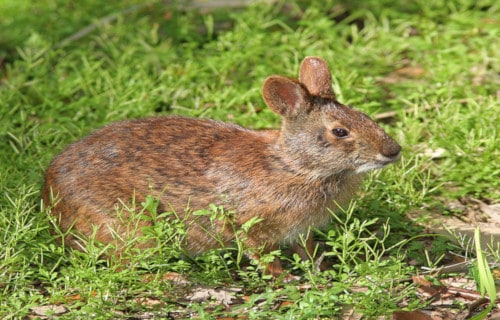
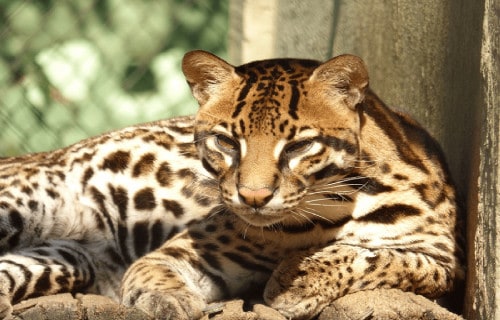
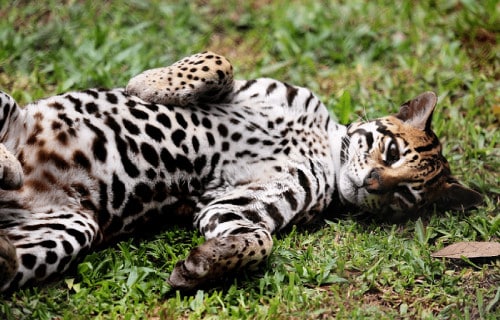
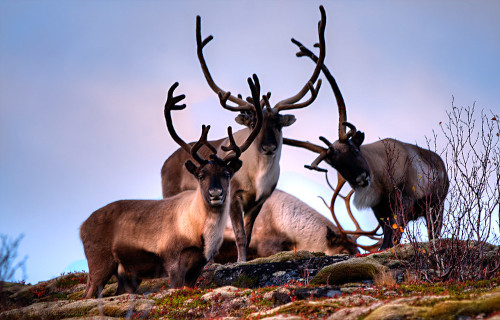
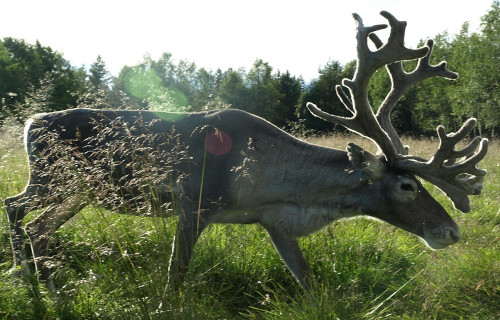
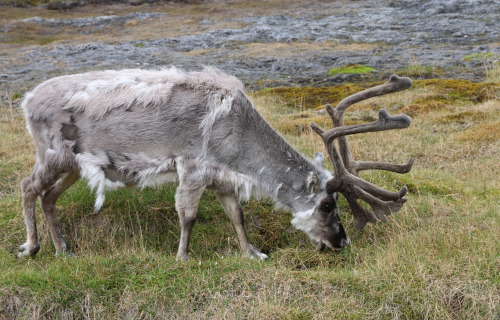
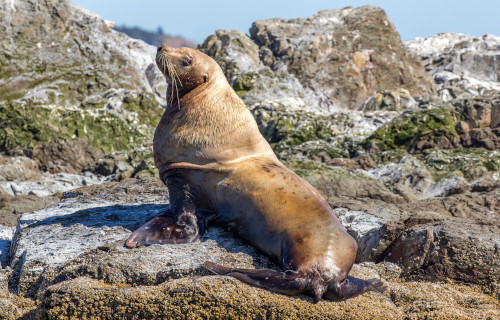
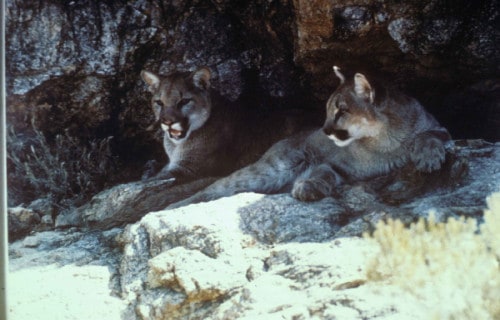
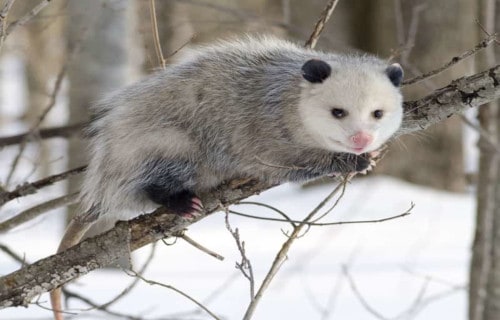

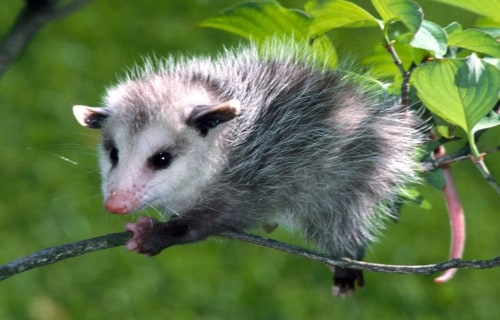
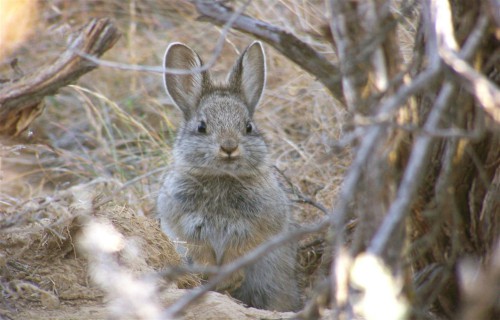
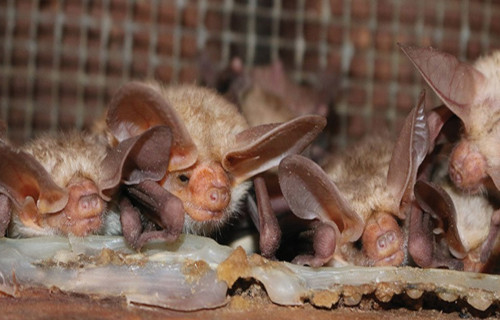
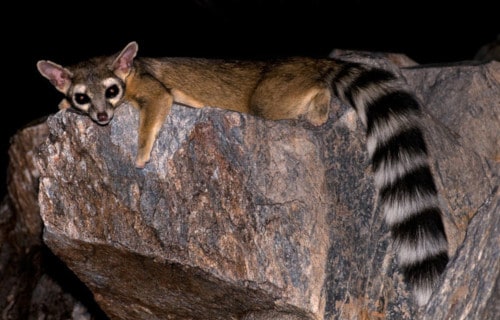
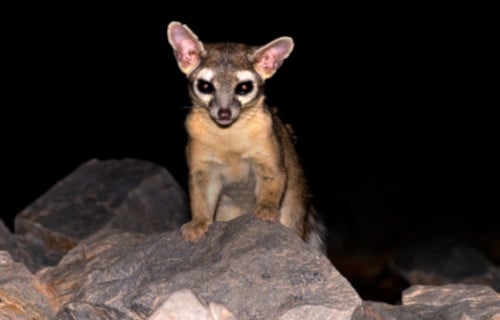
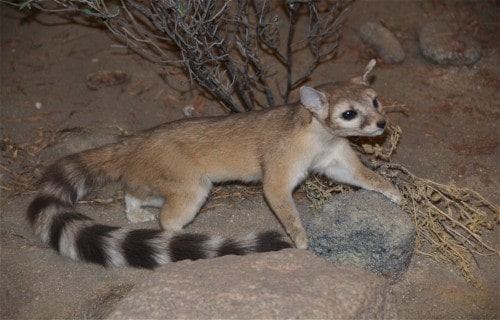
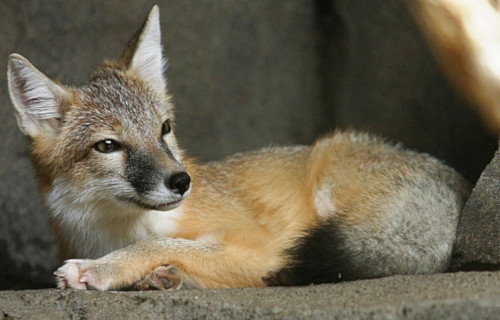
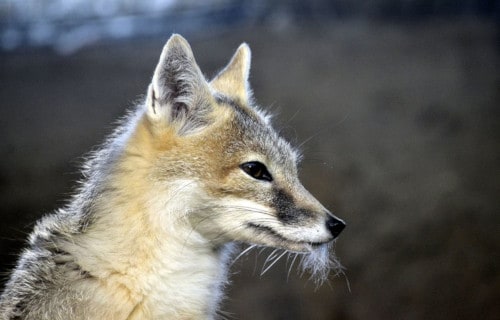










Leave a Reply